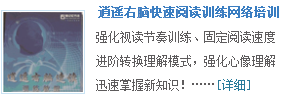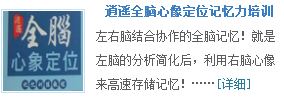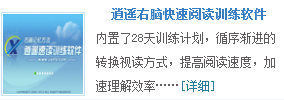六年级上复习资料
Unit1 How Do You Go There? (你怎样去那里?)
重点单词:
on foot= walk走路 by bike骑自行车 by bus坐公车 by train坐火车 by plane坐飞机 by ship坐轮船 by subway坐地铁 near近的 far远的 usually通常 sometimes有时候 easy简单的 the fifth floor第五层楼 traffic lights交通灯 traffic rules交通规则 stop停止 wait等待 get to到达 same相同的 mean意思是 driver司机 right右边 left左边 must必须 know知道
重点句子:
1. How do you go to school? 你是怎样去上学的?
2. I go to school by bus.我是坐公交车去上学的。
3. Usually I go to school on foot. 我通常走路去上学。
4. Sometimes I go by bike. 有时候我骑自行车去。、
5. My home is near/ far. 我的家是近的。/ 远的。
6. Look at the traffic lights, remember the traffic rules. 看着交通灯,记住交通规则。
7. Stop at a red light. Wait at a yellow light. Go at a green light. 红灯停。黄灯等一等。绿灯行。
8. Red means stop, yellow means wait, green means go. 红色的意思是停止,黄色的意思是等待,绿色的意思是通行。
9. How can I get to the park? 我该怎样到达公园呢?
10. You can go by the No. 15 bus. 你可以坐15路公交车去。
知识点:
1、There are many ways to go somewhere.到一个地方去有许多方法。
这里的ways一定要用复数。因为there are是there be句型的复数形式。
2、get to到达.关于本单元我们还要学习与get相关的短语:
get on 上车 get off下车
3、on foot 步行 乘坐其他交通工具大都可以用介词by…, 但是步行只能用介词on 。on foot 相当于walk,只是walk是动词by subway 和by train,注意区别。
by subway: 地铁,是有墙壁的。by train: 火车,露天的。
4、go to school的前面绝对不能加the,这里是固定搭配。但是go home回家,home前不加to。
5、USA 和 US 都是美国的意思。另外America也是美国的意思。
6 go to the park前面一定要加the.如果要去的地方有具体的名字,就不能再加the , 如果要去的地方没有具体名字,一定要在前面加the。但 go to school除外。
7、How do you go to …?你怎样到达某个地方?如果要问的是第三人称单数,则要用:How does he/she…go to …?
8、反义词:
get on(上车)---get off(下车) near(近的)—far(远的) fast(快的)—slow(慢的) because(因为)—why(为什么) same(相同的)—different(不同的)
9、近义词:see you---goodbye sure---certainly---of course
10、频度副词:
always 总是,一直 usually 通常 often经常 sometimes 有时候 never 从不
11、The traffic lights are the same in every country. There are always three lights: red, yellow and green. 每个国家的交通灯是一样。总是有三种:红,黄,绿。
12、China/ US中国和美国: the right side of the road 右边
England/Australia英国和澳大利亚: the left side of the road 左边
文化知识点:P12记住各个交通标志的意思
重点知识:
1.坐某种交通工具用by,例如:by bike, by train。 而走路用 “on” 例如on foot.
2.国家名字,地方名字第一个字母要大些:例如: Canada加拿大, China中国, America美国, England英国, Australia澳大利亚
3.国家名缩写前面加the,缩写字母都要大写。 例如:the USA=the US美国, the UK英国,the CAN加拿大,the PRC中国。
4.频度副词是表示做的次数多少的词语。从多到少依次排列为: always总是,usually通常,often经常,sometimes有时候,never从不。频度副词可以放在句首,也可以放在人称后面。例如:Usually I go to school by bus. = I usually go to school by bus.
5.near近的,far远的。 这两个词是一对反义词。注意: not near= far, not far = near.
6.时间前面用at. 例如:在三点钟: at 3 o’ clock. 一段时间前面用for
7.表达第几层楼的时候我们要用序数词,前面还要有the。 例如:第一、二、三、四、五层楼分别是:the first floor. the second floor. the third floor. the fourth floor. the fifth floor.
8.交通灯traffic lights,交通规则:traffic rules。 这两个词后面都一定要加s, 绝对不能少。因为交通灯有红黄绿三盏,一定是复数,交通规则不可能只有一条,所以都一定要加s,考试的时候千万别忘了加s哦!
9.大部分的国家都是靠右行驶的:drivers drive on the right side of the road. 记住England and Australia, drivers drive on the left side of the road.英国和澳大利亚,司机是靠左行驶的。
10.常用交通标志:参见本第12页中内容。
11.on foot= walk, 都是走路的意思,但是用法不同,on foot用在句子末尾,而walk用法与go相同,可以代替go的位置。 例如:走路回家:walk home 走路去上学 :walk to school 走路去上班 walk to work 走路去医院walk to the hospital
Unit2 Where is the Science Museum? 科学博物馆在哪?
重点单词:
where哪里 library图书馆 bookstore书店 post office邮局 hospital医院 cinema电影院 near旁边 next to旁边(比near更近) in front of在…的前面 behind在...的后面 Excuse me打扰一下 please请 far from离…远的 buy买 want to想要 a pair of一双 get on上车 get off下车 on the left在左边 on the right在右边 east东 south南 west西 north北 turn left左转 turn right右转 go straight直走 am上午 pm下午 now现在 tell告诉 look for寻找
重点句子:
1.Where is the cinema, please? 请问电影院在哪?
2.It’s next to the hospital. 它在医院的旁边。
3.Is it far from here? 它离这远吗?
4.It’s east of the cinema. 它在电影院的东面。
5.Turn left at the cinema, then go straight. It’s on the left. 在电影院左转,然后直走,它在左边。
知识点:
1、问路时要用“excuse me对不起,打扰一下”
2、描述路时可以用顺序词: first首先, next接着, then然后
3、near 表示在附近,next to 表示与…相邻。它的范围比near小。
in front of 在。。。前面 behind 在。。。后面
4、在左边,在右边介词要用on, on the left/on the right,但是东西南北,介词要用in, in the north/east/south/west.
5、for 表示持续多长时间,当表示做某事多长时间都要用for. 如:Walk east for 5 minutes. Then walk straight for three minutes.
6、乘几路车可以用by the No.301 bus, 注意No.中N要大写,后面要加点。如果要用动词可以用take,例如take the No.301 bus.
7、当表示某个地方在另一个地方的哪一方向时,要用介词of。如:the hospital is east of the cinema. 医院在电影院的东边。
8、表示在哪儿转时,用介词at。 如:Turn left at the bank。在银行左转。
9、find表示“找到”,强调找的结果。Look for 表示“寻找”,强调找的过程。
10、在几点前面要用介词at,如at 7p.m.
11、英文的书信与中文的书信不完全一样:
开头:英语是在人称后面加逗号,中文是加冒号。
正文:英语是空三个或者五个字母写,中文要空两个中文字格。
结尾:英语的落款与人名是顶格而且是分开写的。中文则是另起一行,放在一起且稍靠后一点儿的地方。英文名字的书写要注意下。
12、近义词:
bookstore==bookshop 书店 go straight==go down直行
after school==after class 放学后
13、反义词或对应词:
here (这里)---there(那里) east(东)---west(西) north(北)---south(南)
left(左)---right(右) get on (上车)---get off(下车)
14、in the front of…表示在…的前面,是指在该地方的范围内,in front of而则表示在该地方的范围外。如:in front of our classroom是指在教室的外面而且在教室的前面。而in the front of classroom则是指在教室里的前面。
15、 be far from…表示离某地远. be 可以是am , is ,are。介词要用from。
如:I am far from school no 我现在离学校很远。
My home is not far from school.我家离学校不远。
重点知识:
1.问路之前,出于礼貌,我们要说“Excuse me”与后面的句子要用标点符号隔开。
2.Is there 开头的问句怎么回答呢?例如: Is there a cinema near here? 只要把前两个词语的顺序换一下就可以了,肯定回答是:Yes, there is. 否定: No, there isn’t.
3.buy 和 by的区别,这两个词语发音相同,但是意思完全不同,by:乘,坐 buy:买
4.地点名词前面一定要有the,例如: Where is the cinema? How can I get to the hospital?
5.时间前面用at. 例如:在三点钟: at 3 o’ clock.;一段时间前面用for,例如:三分钟for 3 minutes. 星期前面用on,例如:on Monday, on Tuesday, on Wednesday, on Thursday, on Friday, on Saturday, on Sunday.
6.在表达第几路公交车时,注意No. 的书写,N要大写,后面别少了一点!!!
7.在哪里上下车,在哪里左右转,都用介词at,例如: Get on/ off at the cinema. 在电影院的地方上下车。 Turn left/ right at the bookstore. 在书店的地方左右转。
8.by the No. 12 bus= take the No. 12 bus. 坐12路公交车
Unit3 What are you going to do? 你将要做什么?
重点单词:
take a trip旅行 read a magazine读一本杂志 go to the cinema去看电影 this morning今天上午 this afternoon今天下午 this evening今天晚上 next week下个星期 tomorrow明天 tonight今晚 busy忙碌的 go home回家 post card明信片 comic book漫画书 newspaper报纸 dictionary字典 plant trees种树
重点句子:
1.What are you going to do on the weekend? 周末你将要做什么?
2.I’m going to visit my grandparents this weekend. 我将要去拜访我的祖父母。
3.I’m going to have a busy weekend! 我将要度过一个忙碌的周末。
4.I’m going to the supermarket with my mother. 我将要和我妈妈去超市。
5.Where are you going this afternoon? 今天下午你将要去哪?
6.I’m going to the bookstore. 我将去书店。
7.What are you going to buy? 你将要买什么?
8.I’m going to buy a comic book. 我将要去买一本漫画书。
9.When are you going? 你将什么时候去?
10.I’m going at 3 o’clock. 我将三点钟去。
11.What are you going to be? I’m going to be a policeman. 你将要成为什么样的人? 我将要成为一名警察。
知识点:
1、What are you going to do?你想做什么?询问他人在未的打算。be going to 后面要跟动词的原形。注意be going to be 意思是 “打算成为什么,干什么职业。”
注意一下句子的区别,找出正确回答。
What are you going to do this afternoon?
What are you going to buy?
What are you going to be?
When are you going?
Where are you going?
How are you going?
Who are you going with?
2、this evening 和 tonight的 区别:this evening指的是今天晚上睡觉以前的时间,一般指晚上十二点以前。而tonight指的是今晚,一般是指一整晚的时间,通宵。
3、P30写周末的作文的模板
4、部分疑问代词的意义与用法:
(1)What 什么。用问是什么,做什么,叫什么,什么样等等。如:What is your name? 你的名字叫什么?
What is your father? 你爸爸是干什么的?
What is your hobby?你的爱好是什么?
What is your favourite food?你最喜爱的食物是什么?
What’s your math teacher like? 你的数学老师长得什么样子?
(2)Where , 在哪里,到哪里。用问地点。
如:Where are you from?你从哪里?
Where are you going to ?你打算去哪里?
Where is my ruler?我的尺子在哪里?
(3)When,什么时候。用问时间。如:
When is your birthday? 你的生日是什么时候?
When are you going to ?你打算什么时候去?
When do you go to school?你什么时候去上学?
(4)what time 几点了。用问具体的时间,
如:What time is it? 现在几点了?
(5)What colour什么颜色。用问物体的颜色。如:
What colour is your schoolbag?你的书包是什么颜色的?
(6)What kind of 什么种类。用问类别。如
What kind of fruit do you like?你最喜欢哪一种水果?
(7)who谁。用问人物是谁。如:
Who is your English teacher ?你的英语老师是谁?
Who’s that man? 那个男人是谁?
(8) whose谁的。用问物体的主人是谁?如:
Whose pencil is this? 这是谁的铅笔?
Whose bike is blue? 谁的自行车是蓝色的?
(9) which哪一个。用问具体的哪一个。如:
Which season do you like best?你最喜欢哪个季节?
Which pencil is ken’s? the long one or the short one?
哪只铅笔是Ken的?长的那支还是短的那支?
(10)how怎样?用问身体状况,或者事情的状况,对事件的看法等。如:
How are you?你好吗?
How is your mother? 你妈妈好吗?
How about you? 你呢?
(11)how many多少个。用问有多少个,后面要跟名词的复数形式。如:
How many books do you have?你有多少本书?
How many kites can you see? 你能看见多少只风筝?
(12) how much 多少钱。用问物体的价钱。如:
How much are they? 他们多少钱?
How much is your schoolbag? 你的书包多少钱?
(13)how old 几岁了。用问年龄。如
How old are you ? 你几岁了?
How old is your father? 你爸爸多大了?
(14)why为什么。用问原因,一般要用because回答。如:why do you like spring?你为什么喜欢春天?
Because I can fly kites.国为我可以放风筝。
(15) how long 多长
(16)how tall 多高
5、I want to be…我想成为… 表示理想。相当于I’m going to be ….
6、地点名称:fruit stand 水果店 clothes shop服装店 shoe store鞋店 pet shop宠物店 theme park主题公园 the Great Wall长城 plant shop 植物店
restaurant 饭店 bus stop 公交车站
7、在哪个门用介词at, at the north/east/south/west gate.
8、现在进行时与一般将时的区别:
现在进行时构成(ing形式)
构 成 法例 词
A.一般加-ingwork—working study--studying
B.以e结尾的词去e后加-inglive—living write--writing
C. 动词为单音节:以单一元音字母+单一辅音字母结尾,辅音字母双写,再加ing;动词为双音节或者多音节:最后一个音节为重读音节,以单一元音字母+单一辅音字母结尾辅音字母双写,再加 ingstop--stopping
run -- running
swim -- swimming
begin -- beginning
注意 be going to 加动词的原形,表示的不是现在进行时,而是表示将时态。
练习:play __________ swim ___________ write __________ be _________
重点知识:
1.时间往往放在句子的末尾。例如:What are you going to do this evening?
2.go to school去上学,go to work去上班, go to the cinema去看电影,go后面都要有to,但是要注意“回家”这个词组是:go home,中间绝对没有to。
3.with: 和,后面往往跟人。 例如:I’m going to play football with my friends. 我将要和我的朋友一起去踢足球。
4.疑问词:where:哪里(地点) what:什么(东西,事情或职业) when:什么时候(时间) how:怎么样(交通工具) who:谁(人) why:为什么(答句中有because)
5.注意buy与by的区别。 buy:买 by: 乘,坐
6.plant有两个意思:种;植物。 例如: plant trees种树 plant shop植物商店
7.注意区别What are you going to be?和What are you going to do?前者是问将要成为什么样的人;后者是问将要做什么事情。
Unit4 I have a pen pal 我有一个笔友
重点单词:
pen pal笔友 riding a bike(ride)骑自行车 diving(dive)跳水 playing the violin(play)拉小提琴 collecting stamps(collect)集邮 making kites(make)做风筝 drawing pictures (draw)画画 painting (paint)画画 skating(skate)溜冰 hobby爱好 show展览 live (lives) in Beijing居住在北京 go (goes) to work去上班 go (goes) to bed睡觉 go (goes) home回家 teach(teaches) English教英语 read (reads) newspapers读报纸 watch (watches)TV看电视
重点句子:新 标 第 一 网
1.What’s your hobby? 你的爱好是什么?
2.I like collecting stamps.我喜欢集邮。
3.He likes collecting stamps, too. 他也喜欢集邮。
4.Does she teach English? Yes, she does. No, she doesn’t. 她是教英语的吗?是的。不是。
1、动词变为动名词的规则:
动词变为动名词,即是动词加ing。一般要遵循以下三条规则:
(1)一般情况下,在动词的后面直接加ing。如:play—playing read—reading do—doing go—going
(2)以不发音的字母e结尾的动词,要去掉不发音的字母e,再加ing。如:write—writing ride—riding make—making dance—dancing
(3)以单元音加单辅音结尾的重读闭音节,要双写最后一个辅音字母,再加ing。如:run—running swim—swimming put—putting sit—sitting
2、记住like后面要加动词ing,说爱好有三种说法:
①I like swimming.
②Swimming is my hobby.
③My hobby is swimming.
注意:She likes drawing pictures, listening to music and making kites.这几个爱好是并列的,都是在like后面,所以都要加ing.
3、第48页是写自己或者笔友的作文模板
4、第49页是写自己或者是其他人一天的作文模板,记住要用一般现在时态。
2、关于第三人称单数:
动词变为第三人称单数形式的规则:
(1)在一个句子中,如果主语人称既不是你,也不是我,而是另外的一个人,这时的人称叫做第三人称单数。
(2)在第三人称单词的句子中,动词要使用第三人称单词形式。
(3)动词变为第三人称单数形式,要遵循以下规则:
①一般情况下,在动词的后面直接加s。如:
read--reads make—makes write—writes
②以字母s, x, o , sh , ch结尾的动词,在词尾加es。如:do—does wash—washes teach—teaches go—goes pass—passes
③以y结尾的动词分为两个情况,以元音字母加y结尾的动词,在词尾直接加s。如:play—plays buy--buys
以辅音字母加y结尾的动词,要把y变为i,再加es.如:study--studies
④以f , fe结尾的名词,先把f,fe变为v,再加-es.
⑤特殊变化:have--has
(4)在一个第三人称单数的句子中,只要句子中出现了does或者其否定形式doesn’t.该句子中的其他动词就要使用原形。
(5)第三人称单数的肯定句在变为否定句时,在动词的前面加doesn’t. 动词恢复原形。如:He lives in Beijing.---He doesn’t live in Beijing.
(6) 第三人称单数的陈述句在变为一般疑问句时,用does开头,后面的动词也要变为原形。如:He lives in Beijing.---Does he live in Beijing?
注意:用does,后面的动词就不能用第三人称形式。
一般现在时(单三形式)
构 成 法例 词
A.一般动词在词尾加-shelp—helps make -- makes
B.以s, x , ch,sh,结尾的动词在词尾加-esfix ? fixes teach - -teaches wash - -washes
C.以o结尾的动词在词尾加-esgo—goes do--does
D.以辅音字母加y结尾的动词,先y变为i,再加-es fly ? flies study ? studies carry -- carries
E.不规则变化have---has
练习:get ________ teach ________ go ________ study ________fix _______ have ________
3、注意几个单词的变化:
hobby(复数形式)—hobbies have to(同义词)—must same(反义词)---different look the same 看起一样
名词复数的规则变化
构 成 法例 词
A.在一般情况下,词尾加-sbook—books bed--beds
B.以s, x, ch, sh结尾的词,词尾加-esbus—buses box—boxes
dish—dishes watch--watches
C.以f或fe结尾的词,先将f或fe改成v,再加-esknife—knives wife--wives
D.以o结尾的单词,有生命的物质加-es, 无生命的物质加-stomato—tomatoes photo--photos
E.以辅音字母加y结尾,先y将改i,再加上-esfamily—families city--cities
4、几种时态的比较:
一般现在时
“是”有几变要记清,
“am、is、are”共三种。
“do型”“单三”加s(es),
其它一律用原形。
还有have和has,
人称不可胡乱用。
表“有”还有there be,
be要随着主语定。
现在经常反复事,
主语能力或特征。
表示:经常做某事
always, usually, often,sometimes, everyday(week….)
现在进行时
进行时,好记忆,
be加“动词ing”。
变疑问,be提前,
否定be后not添。
be的形式如何变,
跟随主语及时换。
表示:正在做某事
now
一般将时
将时,好记忆,
be加“going to” 加原形。
be的形式要记住,
随着主语及时变。
还有一种表达法,
动词will加原形。
不久将要发生事,
记住要用将时。
表示:打算做某事
1、 tomorrow, the next day, this afternoon, this evening
2、next week (month, year…)
3、 in the year 2011
5、city 城市 county 国家或者乡村 province 省
重点知识:
1.爱好一定要加ing,同样的,当看到like或者likes的时候,后面的动词一定要加ing,例如:我喜欢游泳:I like swimming.
2.当主语是he, she,it以及能用这三个词代替的所有的词我们叫做第三人称单数,后面的动词要加s, 例如:I like diving. He likes diving. She likes diving. 人名一定是第三人称单数。
3.Does开头的问句回答只有两个,肯定回答:Yes, she/ he/ it does. 否定回答:No, she/ he/ it doesn’t. 看到does,后面的动词一定要用原形!!
Unit5 What does she do? 她是做什么的?
重点单词:
singer歌手 writer作家 TV reporter电视台记者 actor男演员 actress女演员 artist画家 teacher老师 doctor医生 nurse护士 driver司机 farmer农民 engineer工程师 accountant会计 policeman男警察 policewoman女警察 salesperson销售员 cleaner清洁工
重点句子:
1.What does your mother do? 你妈妈是做什么的?
2.She is a TV reporter. 她是电视台记者。
3.Where does she work? She works in a car company. 她在哪工作? 她在汽车公司工作。
4.How does she go to work? She goes to work by bus. 她怎样去工作?她坐公交车工作。
1、一些由动词变化而的职业名词:
teach—teacher clean—cleaner sing—singer dance—dancer
drive—driver write—writer TV report—TV reporter
act—actor act—actress art—artist engine—engineer
play basketball/football/baseball—basketball/football/baseball player
2、提问职业有两种方式: What is your father? 或者What does your father do?
3、a/an的区别,跟元音发音有关。例如:
a singer/writer/TV reorter
an actor/actress/artist/engineer/accountant
4、What are you going to be ?问的是长大想干什么,注意用“be”.
I’m going to be a …记住p61和63有关职业信息的内容
5、记住几个地点: shoe /car/air-conditioner company 鞋/汽车/空调公司
6、做“对句子划线部分提问”试题时,一般应该遵循三个步骤:
(1)确定与句子划线部分相应的特殊疑问词,并且特殊疑问词代替相应的划线部分。
(2)把特殊疑问词代替划线部分后的句子变成一般疑问句。
(3)最后再把特殊疑问词提到句首。
以上三个基本步骤可以用三个字概括,即:定,问,提。例如:This is a book.
①This is what. ②Is this what ? ③What is this ?
注意:句①②只是一种变化过程,不必写入试题中。句③才是试题所要求的形式和结果,必须写到试题上。以上三个步骤是对句子划线部分提问最基本的过程。
然而对不同句子的不同成份提问时,还要注意以下几点:
(1). 如果句子的划线部分是主语,只找出相应的特殊疑问词,用代替划线部分即可。如:
1)He teaches us English. Who teaches us English?
2)My mother’s clothes are over there. Whose clothes are over there?
(2). 如果句子的划线部分是谓语(包括谓语动词),不论原的谓语动词是何种形式(时态、语态),都要将谓语动词变为do的相应的形式:不论原的谓语动词后面跟的是人、物还是地点,一律用What代替。如:
1)They are playing football.
①They are doing what. ②Are they doing what? ③What are they doing?
2)They wolf is going to kill that man.
①They wolf is going to do what. ②Is the wolf going to do what?
③What is the wolf going to do?
(3). 如果句子的划线部分是定语,并且在谓语部分,这时,需将特殊疑问词和紧跟其后的名词一起提到句首。如:
1)That is his pen.
①That is whose pen. ②Is that whose pen? ③Whose pen is that?
对定语划线部分提问题,如果划线部分是所属关系,特殊疑问词用whose;如果划线部分指具体的“某一个”时特殊疑问词用which;如果划线部分指内容或职业时,特殊疑问词用what;如果划线部分指数量时,特殊疑问词用how many(可数)或how much(不可数)。如:
1) They are the legs of the desk.
①They are whose legs. ②Are they whose legs? ③Whose legs are they?
2)I like red one.
①You like which one. ②Do you like which one? ③Which one do you like?
3)They have five English books.
They have how many English books.
Do they have how many English books?
How many English books do they have?
文化知识点:职业男女的称呼区别 actor—actress salesman—saleswoman salesperson 男女售货员都可以 mailman—mailperson(女)
重点知识:
1.在表达某人职业的时候别忘了在职业前面加a/ an. 当单词首字母是元音字母(a,e,i,o,u)的时候,要用an。 例如:She is an accountant.
Unit6 the rain of the story.雨的故事
重点单词:
rain雨 cloud云 sun太阳 stream小溪 vapour水蒸气 heavy重的 fall down掉下 become变成 shine照耀 seed种子 soil土壤 sprout幼苗 plant植物 several一些
重点句子:
1.Where does the rain come from? It comes from the clouds.雨自哪里?它自云。
2.Where does the cloud come from? It comes from the vapour. 云自哪?它自水蒸气。
3.Where does the vapour come from? It comes from the water in the river. 水蒸气自哪里?它自河水。
4.How can the water become vapour? The sun shines and the water becomes vapour. 水怎样变成水蒸气呢? 太阳照耀,水变成了水蒸气。
5.How do you do that? 你怎样做呢?
6.What should you do then? 然后你应该做什么呢?
7.In several days, you can see the sprout. 几天后你能看到幼苗。
8.How do you plant a tree? 你怎么样种树?
9.It’s so lovely. 它很可爱。
1、名词变形容词:
rain-rainy cloud ?cloudy wind-windy sun- sunny snow- snowy
2、We can see water in the sea/river/lake/stream/rain/snow
3、注意表示顺序的词:first 首先 then然后 next接下去
4、记住第71页的水循环的图和72页的过程。
5、注意几对自:wheat----flour---bread sheep--- mutton apple----apple juice pig---pork cow----milk
6、注意植物的生长顺序,有可能考到排列顺序题P73
6、should 是情态动词,后面加动词的原形。
文化知识点:水在不同的温度下有三种状态 ice water vapour
重点知识:
1.注意It comes from the ….的表达方式,it后面跟come要加s!!!
2.水循环的文要背出,小水滴这个要求会简单的复述,详见堂作业本上第42页第题
3.种花种树的过程要会说。
种植物的过程:First, we have the seed.首先,我们要有种子。
Then put the seed in the soil.然后把种子放到土壤里去。
Put the pot in the sun..把花盆放在太阳下。
Add water often.经常浇水。
Wait for the sprout.等待长出幼苗。
Wait for the plant.等待植物。
种树的过程:First, dig the soil.首先挖土壤。
Then, put the plant in the soil.然后把树苗放进土壤。
Water it.给它浇水。
Wait for it to gro等待它成长。
音 标
[?:] grass ,class ,ask ,after, farm far farther park
[ʌ] young some ,come, brother,mother bus , sun ,but
[ɔ:] warm for morning short sport horse all , walk
[ɒ] hot , stop , clock, want ,what, watch , wash
[ɜ:] learn early her work bird girl birthday shirt skirt third firstturn nurse Thursday
[ə] brother father mother sister teacher number after flower doctor visitor mirror
[æ] cat ,black ,glad
[e] head sweater breakfast ready bread heavy bed , left , help
[i:] peach beach each please read teacher teach eat seat tea meat ice- cream mean see three green sweet tree need street sweep weekend these , he, she, we
[i] big ,milk ,think give ,live
[u:] food school too zoo cool room noodle afternoon soon balloon spoon moon cartoon whose
[ʊ] cook foot football classroom bedroom bathroom look good goodbye book should would
[θ]mouth think thin thank bathroom three third
[ð] brother father mother the this these that those they them their then with there
[d] dish deal
[t] team tin
[tʃ] chair , China
[ʃ] shirt , shoes sure
语法复习
一、现在进行时态(3种变化规律)
1. 直接加ing:do—doing draw—drawing cook—cooking answer—answering
read—reading listen—listening fly—flying sing—singing play—playing
2. 去掉末尾的e加ing:write—writing dance—dancing take—taking have—having make—making ride—riding dive—diving
3. 双写末尾字母加ing: get—getting run—running swim—swimming sit—sitting
put—putting
你正在干什么? What are you doing? I’m answering the phone.
他/她/它正在干什么? What is he/she/it doing? He’s/She’s/It’s …
他(她、它)们正在干什么?What are they doing? They are …
看到like或likes后面的动词要加上ing
二、一般将时态 (be going to/will + 动词原形)
表示一般将时的时间状语有:this morning, this afternoon, this evening, tomorrow, tonight, this weekend, on the weekend, next week, next month, next year, next weekend.
(今晚)你将要做什么?What are you going to do (this evening)?
I’m going to the cinema.
I’m going to visit my grandparents.
你将什么时候去? When are you going?
I’m going at 7:10.
你将怎样去呢? How are you going?
I’m going by bus.
今天下午你将要去哪里?Where are you going this afternoon?
I’m going to the bookstore.
你将要买什么呢? What are you going to buy?
I’m going to buy a comic book.
你将和谁一起去? Who are you going with?
I’m going with my parents.
三、第三人称单数后面的动词要加s或es
1. 一般情况加s,如:read—reads;live—lives;play—plays;sing—sings
2. 动词末尾以s,x,ch,sh或部分以o结尾的加es。(记住本中出现的这几个:watches, teaches, goes, does, washes, passes)
3. 辅音字母+y结尾的把y变i再加es,如:fly—flies;study—studies
4. 特殊情况:have--has
5. 第三人称单数包括:he; she; it; my father/friend; Amy/Hangzhou等一个人名或地名。
例如:
He likes drawing pictures.
She works in a car company.
It comes from the clouds.
My father goes to work on foot.
Li Lei often plays computer games after lunch.
6. 一般疑问句记住:前面助动词加了es,后面动词就不变化了。例如:
Does she teach English?
Does your pen pal live in Hangzhou?
四、不定冠词a和an的用法
a用于辅音因素开头的单词前;an用于元音因素开头的单词前。
记住本中出现的要用an的单词:an actor;an actress;an artist;an engineer;an accountant;an English book;an orange;an apple;an old woman
五、动词变化为表示职业或人的单词
1. 动词后面加er:work—worker;teach—teacher;sing—singer;TV report—TV reporter clean—cleaner
2. 动词后面加or:act—actor;doctor
3. 末尾以e结尾的直接加r:write—writer;dance—dancer;drive—driver
4. 动词后面加ist:art—artist;tour—tourist
5. 职业男女有区别的:警察policeman—policewoman;演员actor—actress
六、8个疑问词
which (哪一个) what (什么) when (什么时候) where (哪里)
whose (谁的) why (为什么) how (怎么样) who (谁)
七、人称代词和物主代词
I—my(我—我的) you—your(你;你们—你的;你们的) he—his(他—他的) she—her(她—她的) we—our(我们—我们的) they—their(他们/她们/它们—他们的/她们的/它们的)
八、can后面加动词原形
What can you do?
I can cook the meals.
He can fly kites.
She can play the violin.
本文来自:逍遥右脑记忆 http://www.jiyifa.com/xiaoxue/132509.html
相关阅读:PEP六年级英语上册知识点复习资料



